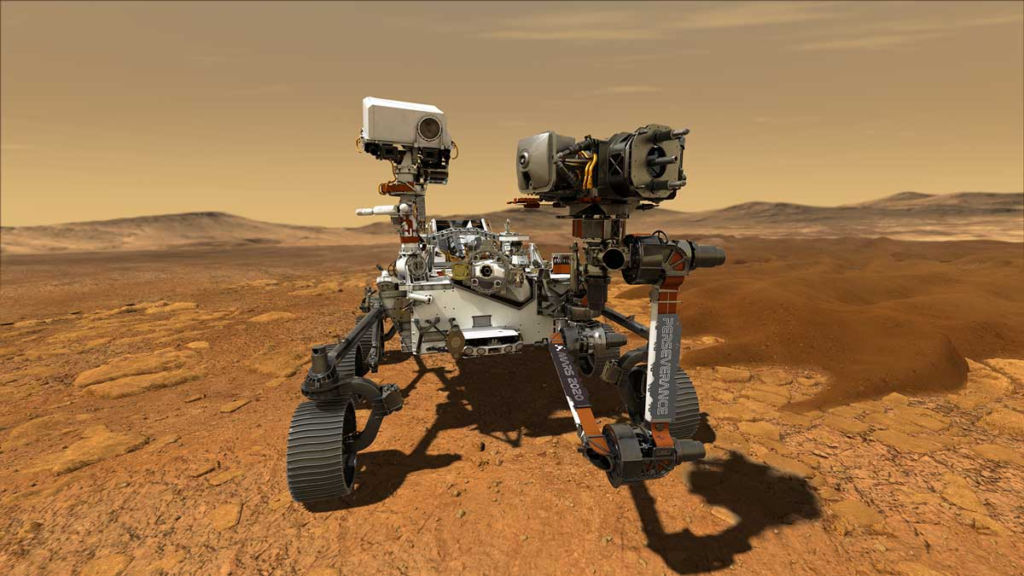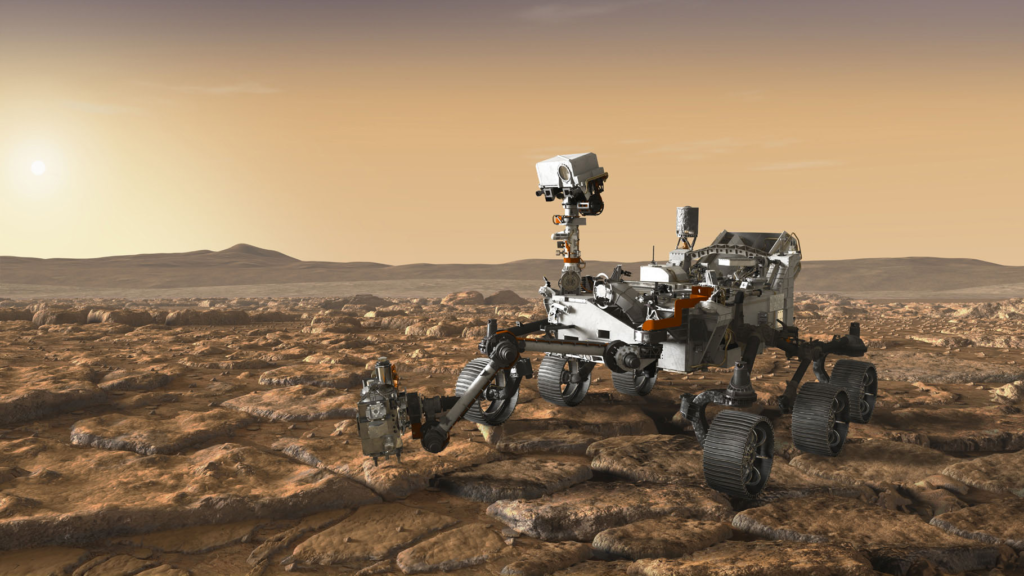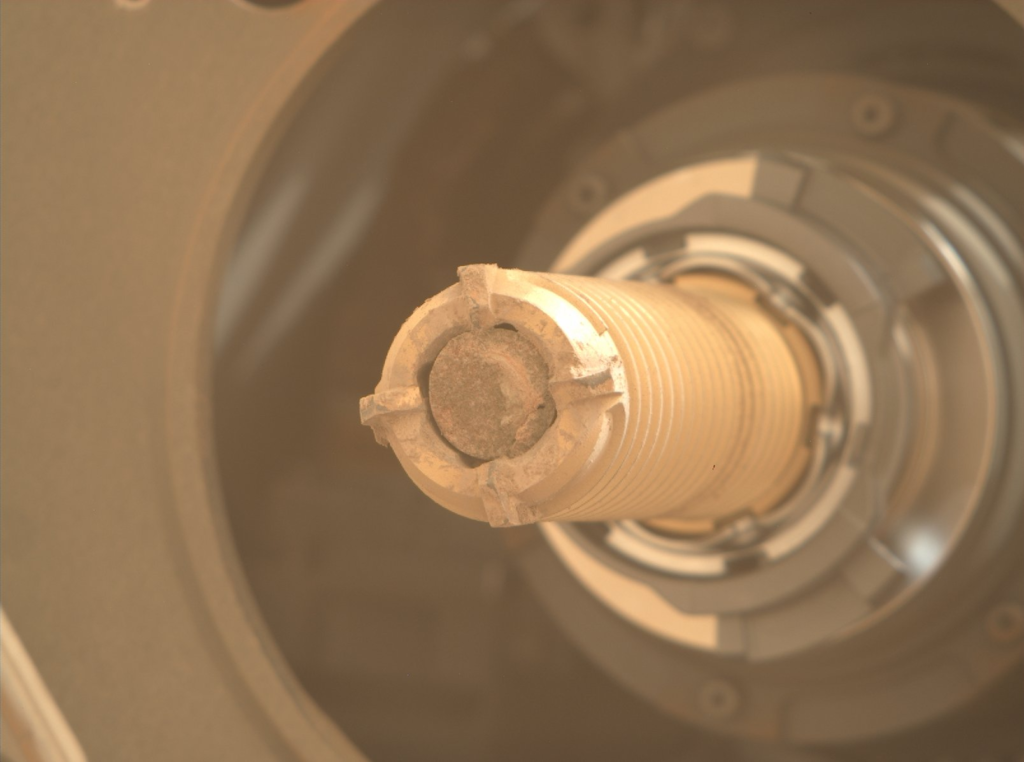
NASA Finds Solution To Sample Seal Issue, Update, & More
Ever since early 2021, the Perseverance rover has stayed busy with a host of different jobs on the Martian surface. One of its main tasks has to do with the Mars Sample Return mission and collecting different samples with the goal of sending them to Earth in the future. A job that involves many different moving parts and would be a first.
Over the last couple of weeks, NASA has provided some valuable updates regarding its progress, some slight complications, and how the overall mission is coming along. This included a new update just yesterday regarding issues with sealing a sample that was collected. Not to mention more information and graphics relating to the fascinating sample return process.
The goal of the Mars Exploration Program is to explore Mars and to provide a continuous flow of scientific information and discovery through a carefully selected series of robotic orbiters, landers, and mobile laboratories interconnected by a high-bandwidth Mars/Earth communications network. As for the MSR mission, if successfully returned, these samples could provide invaluable information about our planetary neighbor. Here I will go more in-depth into the recent seal issue that was resolved, exactly what progress has been made, what to expect in the future, and more.
Seal Issue & Progress

Starting back on October 11th, NASA tweeted saying “Over the weekend, I collected my 14th rock core, but I was unable to seal the sample tube. The sample is stored safely inside my caching assembly, but some work remains to figure out how to cap and seal the tube.” This included a few images of the sample collected and the rover itself. Almost a month went by before NASA provided another update on this problem. They tweeted again on November 4th pointing out, “Still working on a fix to seal my latest rock sample. With my bore sweeping tool, I’m aiming to clean the tube opening to remove any dust preventing the seal. Results look promising, so meanwhile I’m off to explore a new place called “Yori Pass.” Specifically, at this point, the team was making progress identifying and implementing a fix that will allow a seal to cap off the rover’s latest rock sample, which was collected at the base of Jezero’s delta from an outcrop called “Amalik.” The anomaly first appeared on Oct. 5 after the successful coring of the mission’s 14th sample, called “Mageik,” when the seal assigned to cap the rock-core-filled sample tube did not release as expected from its dispenser.
The process of sealing a sample happens in the rover’s Sampling and Caching System. During sealing, a small robotic arm moves the rock-core-filled tube to one of seven dispensers and presses its open end against a waiting seal. On the 17 previous occasions when a sample tube had been sealed during the mission, the seal was pressed fully into the tube. (The rover has taken 14 rock-core samples, two atmospheric samples, and one “witness” sample.) That allowed the seal to be extracted from the dispenser and the arm to move the seal-tube combination to a different station where they are pressed together, creating a hermetic seal. However, when the sample handling system attempted to dispense a seal in the tube of the Mageik sample, the seal encountered too much resistance and did not come free. The sampling system automatically detected the lack of seal and stored the unsealed tube safely so the tube and sample hardware remain in a stable configuration.
Thankfully, just yesterday the agency tweeted mentioning, “It was a challenge, but we persevered. Thankful for my team back at @NASAJPL, who helped me troubleshoot and successfully seal my sample tube for rock core #14. Three cheers for interplanetary teamwork!” As for the rover’s current progress, NASA’s Perseverance Mars rover has begun exploring an area the science team calls “Yori Pass” near the base of Jezero Crater’s ancient river delta. They’ve been eager to explore the region for several months after spotting a rock similar to one Perseverance collected samples from in July.
Mars Sample Return Mission

Now that we know more about the rover’s progress and the solution for the sample seal problem, we can take a closer look at the Mars Sample Return mission and the new graphics recently released. In short, NASA and the European Space Agency (ESA) are planning ways to bring the first samples of Mars material back to Earth for detailed study. The Mars Perseverance rover is the first leg of this international interplanetary relay team. Its job is to collect and cache samples on Mars. A Sample Return Lander would land near or in Jezero Crater, bringing a small rocket on which the samples collected by Perseverance would be loaded. Two Ingenuity-like helicopters would provide a secondary capability to retrieve samples on the surface of Mars. Once the sample cache is launched off the Red Planet, another spacecraft would capture it in Mars orbit, and then bring it back to Earth safely and securely in the early to mid 2030s. These first collected and returned samples could answer a key question: did life ever exist on Mars? Only by bringing the samples back can we truly answer the question by using the most sophisticated, state-of-the-art labs, at a time when future generations can study them using techniques yet to be invented.
In addition, just a week ago JPL released a new animation highlighting this exact process in more depth. It begins with a Sample Retrieval Lander that would launch to Mars in 2028, carrying with it a NASA-led Mars rocket and a pair of small Mars helicopters. The lander would touch down close to Perseverance’s landing location in Jezero Crater. Having collected and stored a wide variety of samples, the Perseverance rover would be the primary means of transporting samples to the Sample Retrieval Lander, handing off a collection of sample tubes carried on board. An ESA-provided robotic arm would transfer the tubes into a sample container on the lander’s rocket. The Sample Retrieval Lander will eject the Mars Ascent Vehicle before it lifts off. The MAV would be the first rocket ever to launch off the surface of Mars, transporting the container of sample tubes into orbit.
The Capture, Containment, and Return System aboard the Earth Return Orbiter would capture the Orbiting Sample container, orient it, and transfer it into a clean zone for return to Earth. The ESA Earth Return Orbiter would carry the NASA-provided Capture, Containment, and Return System and Earth Entry System. The orbiter would launch from Earth in 2027 and meet the sample cache in Mars orbit. The return system within the orbiter would capture and contain the samples, placing them in the Earth Entry System. The Earth Return Orbiter would then ferry the entry vehicle and its precious cargo back to the vicinity of Earth, where it would separate and safely touch down on land. Finally, the Earth Entry System would contain the orbiting sample inside a disk-shaped vehicle with a heat shield for safe entry through the Earth’s atmosphere. Altogether there are quite a few ambitious steps necessary in order for this mission to be a success. This being said, the benefits provided by having access to Martian samples on Earth are invaluable.
Bringing Mars samples to Earth would allow scientists across the world to examine the specimens using sophisticated instruments too large and too complex to send to Mars and would enable future generations to study them. Curating the samples on Earth would also allow the science community to test new theories and models as they are developed, much as the Apollo samples returned from the Moon have done for decades. This strategic NASA and ESA partnership will fulfill a solar system exploration goal, a high priority since the 1970s and in the last three National Academy of Sciences Planetary Science Decadal Surveys.
Earlier this year, NASA finished the system requirements review for its Mars Sample Return Program. During this phase, the program team evaluated and refined the architecture to return the scientifically selected samples, which are currently in the collection process by NASA’s Perseverance rover in the Red Planet’s Jezero Crater. The architecture for the campaign, which includes contributions from the European Space Agency (ESA), is expected to reduce the complexity of future missions and increase probability of success. “The conceptual design phase is when every facet of a mission plan gets put under a microscope,” said Thomas Zurbuchen, associate administrator for science at NASA Headquarters in Washington. “There are some significant and advantageous changes to the plan, which can be directly attributed to Perseverance’s recent successes at Jezero and the amazing performance of our Mars helicopter.”
This advanced mission architecture takes into consideration a recently updated analysis of Perseverance’s expected longevity. Perseverance will be the primary means of transporting samples to NASA’s Sample Retrieval Lander carrying the Mars Ascent Vehicle and ESA’s Sample Transfer Arm. As such, the Mars Sample Return campaign will no longer include the Sample Fetch Rover or its associated second lander. The Sample Retrieval Lander will include two sample recovery helicopters, based on the design of the Ingenuity helicopter, which has performed 29 flights at Mars and survived over a year beyond its original planned lifetime. The helicopters will provide a secondary capability to retrieve samples cached on the surface of Mars.
Conclusion
NASA and its partners are continuing to work on the necessary equipment and the plan itself to send Martian samples all the way to Earth. Just yesterday the agency reported that an error with the sample seal process has been fixed which is a good sign going forward. We will have to wait and see how it progresses and the impact it has on the space industry.
